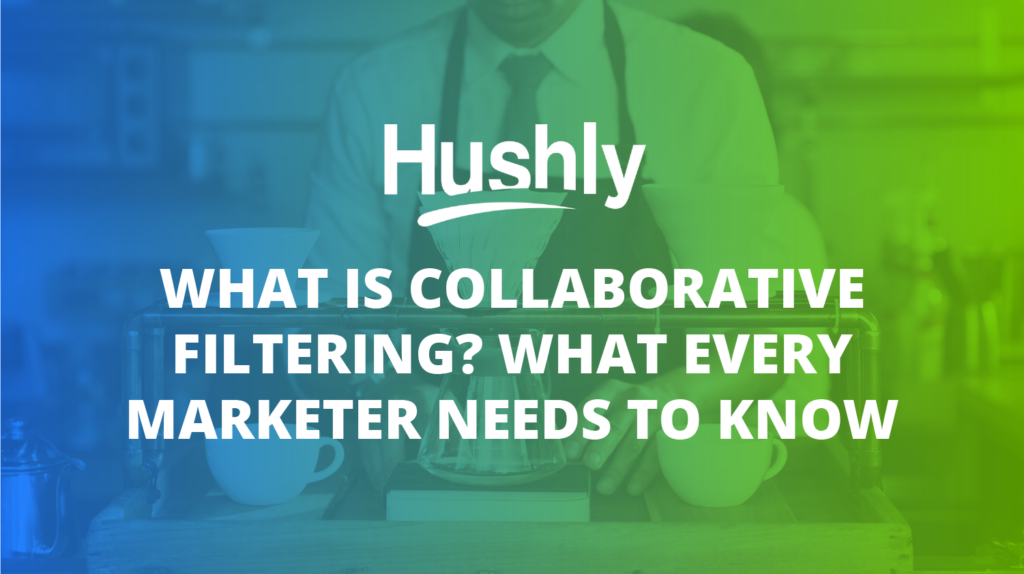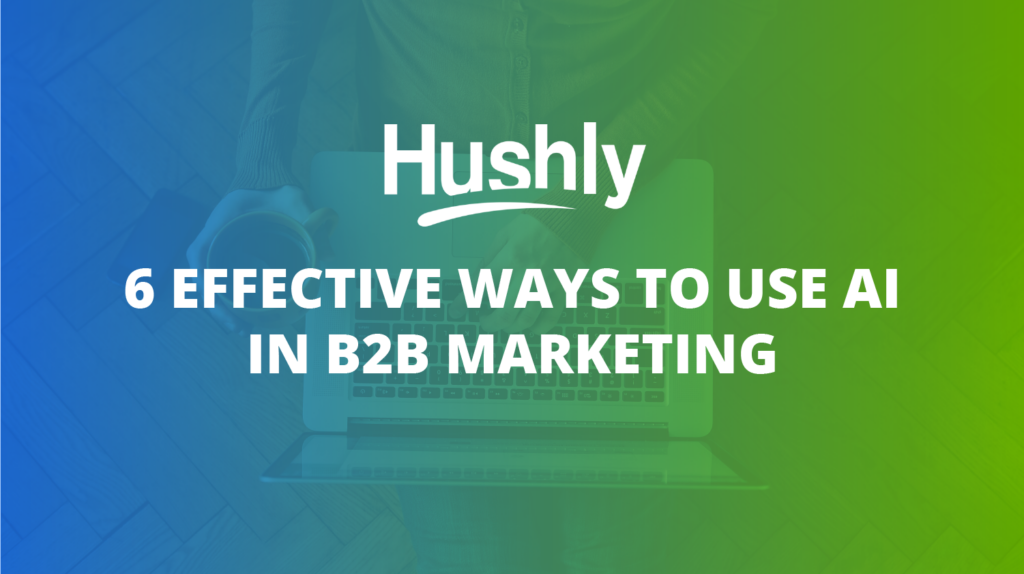Filters
Content Type
Topic
AI and Marketing: How to Further Your Lead Generation

Regardless of industry, if you want your business to be successful, you need marketing and sales teams that perform.
And teams that perform well bring one core thing to the table: leads. Without leads, you can kiss the idea of a successful business goodbye. The problem is generating leads in 2020 differs from lead generation a decade ago.
Technological advancements have multiplied since the turn of the millennium, and now more than ever, it’s important for companies to take advantage of the tech available to help with day-to-day business processes like lead generation.
In the recent past (and still to this day), companies rely on methods like cold calling, direct mail campaigns, and in-person networking events to generate leads. When the internet became a must-have, the whole lead gen process changed.
Now, marketers and salespeople had extended access through technological advancements to help them with lead generation. Cold emailing, digital content creation, and social media platforms became must-haves in addition to more traditional lead gen methods. But now none of the aforementioned “new technologies” are actually considered new anymore. For example, a social media presence is no longer an option; if your company isn’t online, you’re letting potential customers look past you and move toward your competition.
The lead potential that social platforms and the internet bring are undeniable. That said, everyone’s using them now. To overtake your competitors, you need to implement new high-tech add-ons to your lead gen strategy. That’s where artificial intelligence comes in.
Using AI to further lead generation
Artificial intelligence isn’t “new” technology, but its prevalence in the business world is relatively new – and rapidly growing. We’re going to explore how AI functions as a tool for marketing and sales teams, and ultimately helps with the necessary task of lead generation for a business.
AI technology has grown and developed so much since the 1950s, though the concept of artificial intelligence existed long before then. The main business use case for AI tech is obvious: automation. With general marketers’ roles being so multifaceted: writing, researching, conducting outreach, event planning, and more, automation is more than welcome in today’s business environment. Even with more specific offsets of general marketing, demand gen marketers are stretched thin, too.
How is AI currently being used for lead generation purposes?
Even if your demand gen team isn’t currently utilizing AI for lead gen purposes, perhaps a landing page sales funnel is more of your speed, there are other people out there who are. Let’s explore some real-life use cases of AI in lead gen in its current iteration.
1. Identifying potential leads
Finding leads on your own is a laborious process, so many companies put lead generation off unless and until their pipeline is close to “dry”. Identifying where a customer falls in the stages of awareness and targeting different awareness groups can prove tiresome. AI-powered solutions, however, can help identify new leads in a less labor-intensive way than that of a human.
Data science and machine learning platforms can be used to mine customer data by combing through the internet looking for specific people, companies, or products that might have existing customer lists that can be used by your in-house sales/marketing teams as a jumping-off point of contact. There even are specific AI-based platforms that completely automate the lead development and generation process, ultimately resulting in new business relationships.
2. Generating lead insights and data-based instincts
Getting insight into your leads is one task that sales and marketers must do in order to properly, seamlessly engage. Instead of using a human instinct to draw conclusions or assumptions about leads, utilizing data to make informed insights is the way to go. In fact, your teams can develop lead profiles based on data points and factors, such as a lead’s online presence (i.e. social media, purchase history, most visited websites, and more).
For instance, LinkedIn’s Sales Navigator allows users to search for people, companies, and types of experience to discover whether they are potential leads or not. Further, it allows you to segment based on territory and includes features like tagging and saving accounts of interest. Another tool of interest is Einstein, Salesforce’s CRM platform. Einstein provides automated lead scoring, which can help businesses learn about accounts or users that are most likely to convert.
Lead scoring software is essential for helping your teams be successful. It saves the hassle of wasting time on leads who won’t convert and identifies leads who need more outreach, what kind of interactions your leads need, and how you can push them to convert. That way, you can nurture the leads who will likely bring you what you need: conversions.
3. Providing personalized experiences to possible leads
It isn’t surprising to hear that most people don't trust salespeople. In the same vein, few people trust marketers, either. The campaigns seem tired, overdone, and impersonal, and the overarching message to users is “give us your money” or “buy our product,” which makes the whole experience not something anyone can look fondly upon. That doesn’t mean people don’t want to be sold to, but it does mean that people need more of an incentive than a campaign targeted to just anyone.
People crave personalized experiences, and with how competitive the market is these days, you need to implement personalization to get your leads to convert. Gone are the days of mass phone calls with a messaging sheet for your salespeople to read off of. You also can’t rely on canned emails that follow a generic template that all people see right through. Research shows that 80 percent of people are likely to buy something if a brand offers a personalized experience. The same holds true for companies and lead generation. If you personalize your campaigns and messaging to your users, they will more likely turn into customers.
But you might wonder how to achieve this and take your personalization to the next level. Content experience software utilizes AI to help companies personalize digital content. The purpose of content experience software is engaging an audience with thoughtful, curated content that is specific to types of users rather than a pool of leads as a whole. An example of this might be ads and written content that speak to a user’s interests or pain points, thus providing a value-add of sharable content they can take with them, rather than relying on “tried-and-true” calls and emails to do the job for you.
4. Offering follow-up to prevent leads from going silent
A huge missed opportunity for businesses is following up with their leads. In your personal life, you might avoid “double texting” someone as not to seem annoying, but in the professional world, follow-up is key for maintaining a full and abundant pipeline. Companies tend to become complacent if or when they have a multitude of leads, falsely assuming that their pipeline will never run dry. But that’s simply not the case.
However, you can’t necessarily rely on your sales or marketing teams to have the bandwidth to follow-up with leads if they’re focusing their efforts on more obvious leads who seem closer to conversion. Instead, using AI sales assistants can fill the follow-up gap your teams are neglecting to close.
These sales assistants use AI engagement tactics to follow-up with leads via email, live chat, and text messaging – a variety of ways to re-engage with different audiences. Plus, the messaging coming from these AI sales assistants is personalized, not canned, as mentioned above. The tools are crafted with natural language processing software, which can help AI to learn how to best communicate with specific leads, down to matching/reflecting the tone and type of messaging most comfortable per person. The more natural the conversation, the more likely potential customers will be open to re-engaging with your company, and the more comfortable they’ll be communicating with a member of your sales or marketing team after the first re-engagement via an AI-powered assistant.
Don’t wait to integrate – start using AI today
Artificial intelligence is no longer a “future” need or a nice-to-have; to move ahead of your competition, you should be using all available technology to boost business visibility. While AI-powered solutions aren’t the only way to connect with leads, they do help with streamlining lead communication and acquisition processes.
If you’re worried about the cost or potential implications of artificial intelligence on your business, throw those fears to the side. AI opens channels of communication and brings peace of mind to your sales and marketing teams. If you’re not already using AI for your lead generation purposes, you’re falling behind your competition. As time progresses, more businesses will adopt AI as a standard inclusion in their lead generation strategy. Don’t get left behind.
The post AI and Marketing: How to Further Your Lead Generation appeared first on Hushly.


